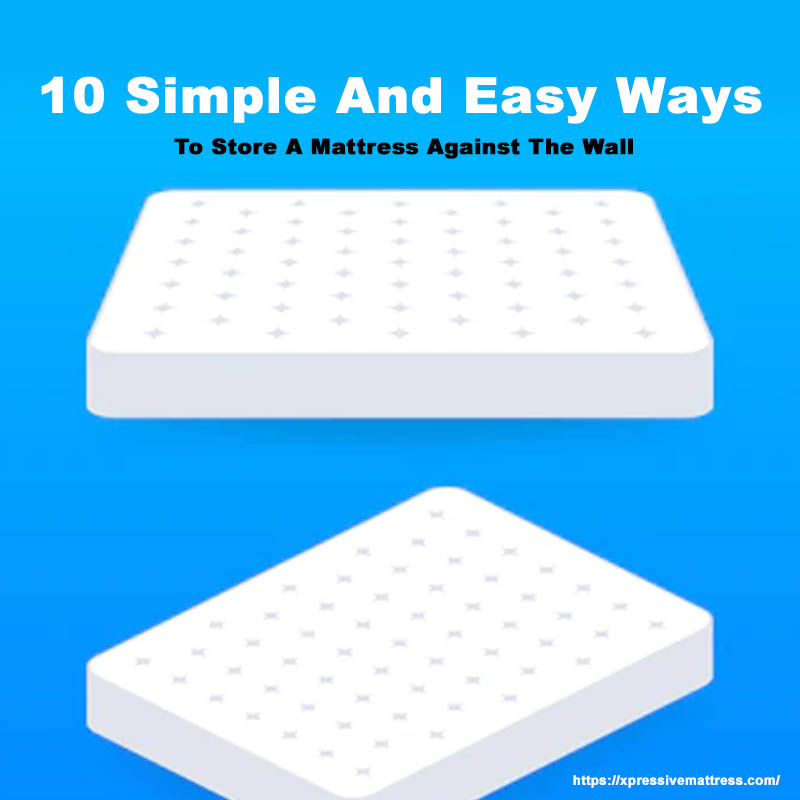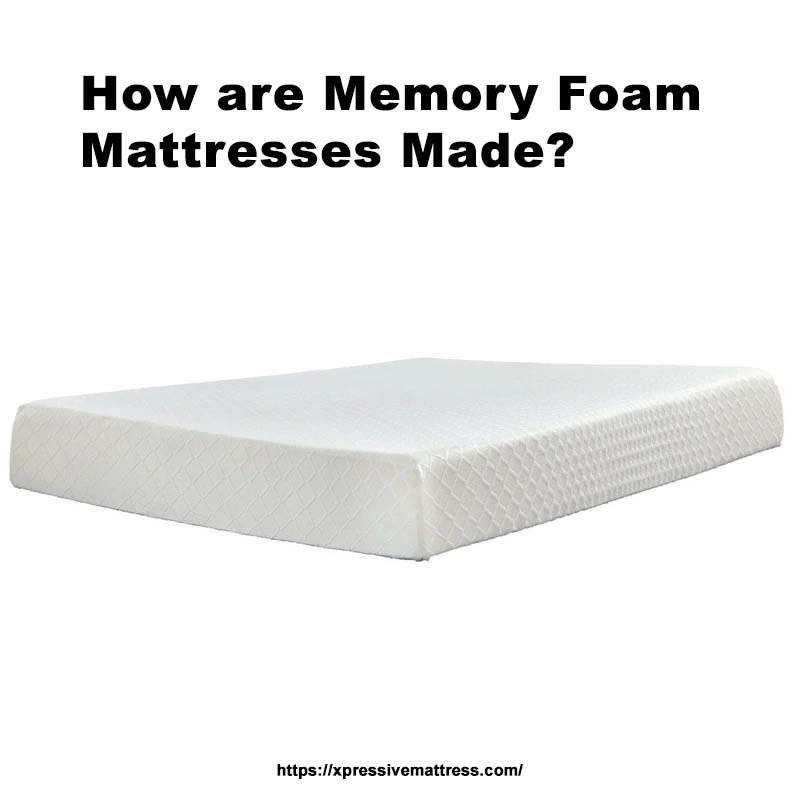Cutting mattress foam at home can be a great way to save money and customize your sleeping experience.
It’s not as hard as it sounds, either!
With the right tools and some patience, you’ll have no problem cutting through even thick layers of foam with ease.
Here are a few things:
- An electric carving knife or jigsaw.
- Measuring tape.
- Marker/pencil for marking measurements on the foam.
- Protective eyewear (safety first!).
Once everything is ready, measure out where you want to cut using your measuring tape and mark those spots with a pencil or pen before carefully slicing away – voila!
You now have custom-cut pieces of mattress foam that fit perfectly in whatever space they’re intended for.
This is one DIY project worth trying!
But only because it saves time and effort compared to buying pre-made mattresses from stores that often come in standard sizes.
Plus, there’s something satisfying about creating something yourself too!
What Materials Will You Need To Cut Mattress Foam?
To cut mattress foam, you will need a few materials.
First and foremost is the right type of saw.
An electric carving knife or jigsaw works best for this job.
You’ll also want some safety gear like goggles and gloves handy in case any pieces fly off during cutting.
Additionally, it’s important to use sharp blades specifically designed for cutting through foam material so as not to damage your work surface or yourself!
Finally, ensure you have plenty of space around where you’re working.
Enough room allows for easier maneuvering when making precise cuts on large foam sheets.
How To Measure And Mark The Foam For Cutting?
Measuring and marking foam for cutting is an important step in any project.
Here are some tips to help you get started:
- Measure the area where your foam will be cut using a tape measure or ruler. Make sure it’s accurate!
- Mark out the shape of what must be cut with a marker pen on top of the foam. Use straight lines, as this makes it easier to cut later on.
- If necessary, draw guidelines onto both sides of the piece so they can easily line up again after being separated by sawing/cutting them apart (e.g., two parallel lines). This helps ensure accuracy during reassembly afterward, too!
- Use sharp scissors or craft knife blades to carefully trim excess material from around the edges before starting the actual sawing process. This ensures clean cuts without damaging the underlying surface below while also making the final product look more professional overall once finished off properly at the end stage(s) too!
What Is The Best Way To Cut Mattress Foam?
The best way to cut mattress foam is with a sharp electric knife.
This tool will give you the most precise and clean cuts, allowing an even finished surface.
Your blade must be very sharp to get accurate results.
Dull blades can cause jagged edges or uneven surfaces on the foam.
Here are some other tips:
- Use a straight edge as a guide – this helps keep lines neat and consistent.
- Make sure there’s plenty of space around where you’re cutting so it doesn’t become too crowded.
- Wear protective gear such as gloves and goggles. At the same time, working with power tools like electric knives.
- Measure twice before making any cuts – mistakes could ruin your project!
- Finally, use slow, steady strokes when using an electric knife. Going too fast may result in inaccurate measurements or rough edges on the material being cut.
With these simple steps followed carefully, anyone should be able to achieve professional-looking results from their DIY projects involving mattress foam!
How To Cut Mattress Foam Without Damaging It?
Cutting mattress foam can be a tricky task.
Here are some tips to help you do it without damaging the foam:
- Use sharp scissors or an electric knife for clean cuts.
- Measure and mark your cut lines with chalk, pencil, marker, or tape.
- Place the foam on a flat surface like a tabletop before cutting so that it doesn’t move around while being cut.
- Cut slowly in one direction only – don’t see back and forth, as this will damage the edges of your piece(s).
- If using an electric knife, make sure not to press too hard against the blade when making each pass through – just let gravity do its job!
- Finally, use the sandpaper after cutting to smooth out any rough edges.
Following these steps should ensure that you get perfect results every time!
How To Cut Complex Shapes In Mattress Foam?
Cutting complex shapes in mattress foam can be a tricky task.
Here are some tips to help you get the job done:
- Choose your tools carefully – use an electric carving knife, jigsaw, or band saw for best results.
- Mark out the shape on the foam with chalk or marker pen before cutting.
- Cut slowly and steadily along your marked line using steady pressure so it doesn’t slip off track.
- Use sandpaper to smooth any rough edges after cutting is complete.
- If necessary, glue pieces together once cut into desired shape(s). With these steps followed correctly, you should have no problem creating intricate designs from mattress foam!
How To Sand The Edges Of The Mattress Foam?
Sanding the edges of mattress foam is a great way to make your bed look and feel more comfortable.
Here’s how you can do it:
- Gather all necessary materials, such as sandpaper (coarse grit for rough surfaces.
- Medium-grit for smoothing out bumps), a vacuum cleaner with the brush attachment, dust mask or respirator, and safety glasses/gloves if needed.
- Vacuum the surface area where you will be working to remove any dirt particles that may interfere with the sanding process later on, to get an even finish when done!
- Start by using coarse grit paper first – this helps smooth out any large imperfections like lumps or ridges before moving on to finer grades, better suited to polishing up smaller details without damaging them.
- Use medium-grade paper after initial course work has been completed – this should help refine those small areas while also giving off a nice polished appearance upon completion stage reached finally afterward following along behind everything else thus far gone past present future Cetera et cetera ad infinitum amen hallelujah thank goodness yay!!
How To Finish Cutting Mattress Foam Safely And Efficiently?
Cutting mattress foam can be a tricky task. Still, it is possible to finish safely and efficiently with the right tools and safety precautions.
Here are some tips for getting started:
Gather your supplies
You will need an electric knife, sharp utility blade, measuring tape, straight-edge ruler (or yardstick), and marker/pencil. Protective eyewear and gloves. Dust mask if desired.
Measure twice
Measure out the dimensions of what needs to be cut accurately before beginning. So that the no guesswork involved in cutely holding down material.
Use clamps or weights on either side of where you plan to cut so that nothing shifts while working with blades near them.
This helps ensure accuracy and prevent any potential injuries from occurring due to slipping materials during the operation time frame.
Cut slowly
Make each slice through foam using slow, steady strokes instead of rushing into things too quickly.
This could lead to mistakes along the way, such as accidental nicks within the process itself, thus ruining the entire project altogether!
Clean up afterward
Once finished, always remember to clean the area around work station properly.
Dispose of all used items like knives away correctly to avoid future accidents.
Conclusion: How To Cut Mattress Foam At Home?
In conclusion, cutting mattress foam at home is a great way to save money and customize your bedding.
It’s not as difficult or intimidating as it may seem.
You can easily cut through any foam with the right tools and patience.
You’ll need an electric knife, straight-edge ruler, and marker pen/pencil to mark measurements on the material before cutting – all available from most hardware stores.
Additionally, ensure that you have protective eyewear when using power tools such as saws or knives to protect yourself against flying debris!
Finally, remember that practice makes perfect, so don’t be afraid to try again if something doesn’t work out the first time around – keep going until you get it just how you want it!



